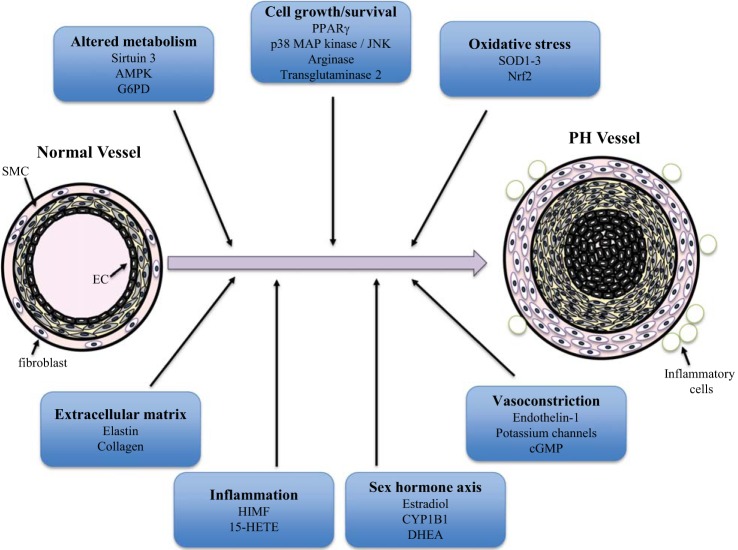Fig. 4.
Overview of mechanisms contributing to pulmonary hypertension. Pulmonary hypertension is characterized by remodeling of all layers of the pulmonary vasculature, including endothelial cells (ECs), smooth muscle cells (SMCs), and fibroblasts, resulting in vascular wall thickening and occlusion of the lumen, which play roles of varied prominence depending on the etiology of disease. In addition, recruitment of inflammatory cells contributes to the remodeling process. Included here are several of the pathogenic mechanisms that are highlighted in this review of recent progress in the field. AMPK, AMP-activated protein kinase; G6PD, glucose-6-phosphate dehydrogenase; SOD, superoxide dismutase; Nrf2, nuclear factor E2-related factor 2; PPARg, peroxisome proliferator-activated receptor-γ; JNK, c-Jun NH2-terminal kinase; CYP1B1, cytochrome P450 1B1; DHEA, didehydroepiandrosterone; HIMF, hypoxia-induced mitogenic factor; 15-HETE, 15-hydroxyeicosatetraenoic acid.

